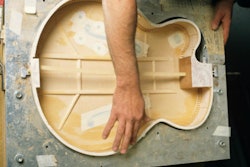Whether you are just getting going on your business career or you have been working in the field for years, one thing that always comes back to bite you is costs. How can we alleviate these costs? What are some strategies for tracking manufacturing costs and managing them so that they don't get too far out of hand? If you have been wracking your brain and can't find a way to meet and satisfy your monthly nut, here are some strategies for tracking manufacturing costs that can help you keep these costs in check.
Setting Appropriate Prices: One of the most evident of the strategies for tracking manufacturing costs is making sure that you are getting the right prices, broadly. From your overhead to your product costs to your period costs and beyond, you have got to be sure that you are taking in the right amount of monies for what you are putting out into the world. If you are not getting the right amount of money for your products, then you are hemorrhaging every month — not a sustainable business model.
- All of your manufacturing costs are going to need to be taken into account when you are figuring your overall cost structure. Obviously, you need to take out the actual physical costs of what it takes to make your product, but then that overall cost will help you in determining some better strategies for tracking manufacturing costs.
- Your period costs can vary greatly from season to season. If you are only sending out one truck per month of your products during the slower seasons, but are sending out 10 trucks to meet the demand of your peak season, then you can see that your period costs will be far greater over that busier time period. One good thing is that when you are developing strategies for tracking manufacturing costs, you will see this pattern play out consistently year over year and season after season.
- Your overhead is what it will cost to keep making your products and keep things humming. If you don't invest in overhead and making your business run better, faster, and smoother, then these overhead costs are only going to increase precipitously. You should always be thinking of ways to make your business run better as it relates back to inventory.
Managing Inventory: Another thing that should be front and center on your mind when you are trying to figure better strategies for tracking manufacturing costs is your inventory costs. How much does it really cost to make your products quarter after quarter? How are you using your space and your facilities to best maximize productivity? How is too much inventory during slower seasons and lack of inventory at busier times weighing you down?
- Obviously, you are going to have to hold onto some kind of inventory. But how you manage and control that inventory can be the difference between successful and unsuccessful strategies for tracking manufacturing costs.
- Your inventory is also going to be something that changes as you move through the lifecycle of your business. Maybe your product begins to take off and you decide to heap on corporate sponsorship. That is going to be a very different situation than you and your tiny crew working in your rented out space making your products. You are going to need to be sensitive to the experience of managing inventory and be prepared for things to change as your business matures.
Direct Product Costs: Another strategy for drilling down deep into your businesses’ bones is to understand what your direct product costs are all about. It's actually figured pretty simply. If you can trace the costs on your books — costs for things like materials, assembly, storage, and distribution — you are dealing with direct costs. You should always be thinking about how to make a better mousetrap, because your competition is probably already doing the same thing.
- Businesses that are doomed to fail have a tendency to view the world economy as a straight line and the area they occupy as hallowed ground. Anyone who isn't consistently playing defense while holding the ball will find themselves out of action and without the ball in due course.
- It's a little bit like thinking that your job in a department store or a restaurant is untouchable. The fact is that so many different people have had your job before you, and no matter how well you think you’re doing, that doesn't mean a whole lot to your contemporaries. In this game, everyone is out for themselves. Even when someone helps you out in a seemingly selfless manner, it should be viewed with a small amount of skepticism. The chances are that someone who has lent you a hand will expect the same from you one day, not too far down the road.
- Whatever your opinion of your place in the business hierarchy, you always need to be thinking about your direct costs. If you are making a widget for $10 and someone else comes along and makes ostensibly the same widget but can offer it to your loyal customers for $5, what do you think will happen? Why would someone pay double for the same product?
- Your direct product costs include almost everything from product manufacturing to labor. Anything you can draw a straight line to is a direct cost.
Indirect Product Costs: A fourth area of strategies for tracking manufacturing costs is taking into account your indirect product costs. Your indirect production costs include things that you can't quite as readily tie into any specific product. Even if you feel as though your costs are all the same, your indirect production costs are tougher to get a handle on. Still, you need to look at all of your costs and try to find simple and easy ways of trimming back the fat. Even if something is not part of your everyday costs, it still adds up.
You need to do what is best for your business. This includes finding the most effective strategies for tracking manufacturing costs. If you can keep your costs under wraps and keep your customers satisfied then you should have no trouble watching your business survive and thrive!
Tom Bonine is president of National Metal Fabricators (http://www.nmfrings.com/). The Chicago area firm, established in 1944, offers custom fabrication, angle rings, welding, and bar milling services.























